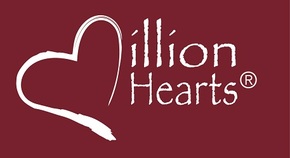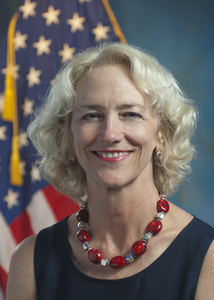Imagine discovering a special potion that could cut in half your risk of dying from any cause. This wonderful discovery also could make you stronger and healthier, and thus very likely happier. And while we're conjuring this magical drug, let's make it covered by insurance.
Would you take it?
Well, if you have had a heart attack, heart surgery or angioplasty, or heart failure, that lifesaving, life-changing treatment already exists. It's called cardiac rehabilitation.
Cardiac rehab is a team-delivered set of services that includes supervised exercise, counseling, and nutritional and lifestyle education, all personalized to match the needs of someone recovering from a brush with heart disease. And it works.
People who complete the typical course of 36 one-hour sessions compared to those who attend only a few reduce their chances of death by almost 50 percent and their risk of re-entering the hospital for any cause by 30 percent.
Despite these benefits, fewer than 20 percent of eligible patients participate in cardiac rehab; put another way, more than 4 out of 5 don't take advantage. The participation rate dips into the teens for eligible older Americans.
Research shows participation is especially low among women and minorities. This is troubling because heart disease is the No. 1 killer of women and because certain minorities are already at higher risks of heart disease and stroke. This means the subsets of the population at the highest risk are at the bottom of participation rates.
The American Heart Association is trying to change the landscape. We're working to improve the cardiovascular health of all Americans by 20 percent while reducing deaths from cardiovascular diseases and stroke by 20 percent, all by the year 2020, and we believe cardiac rehab can make a difference.
 Cardiac rehab also supports Million Hearts, a national initiative led by the Centers for Disease Control and Prevention and the Centers for Medicare & Medicaid Services to prevent 1 million heart attacks and strokes by 2017.
Cardiac rehab also supports Million Hearts, a national initiative led by the Centers for Disease Control and Prevention and the Centers for Medicare & Medicaid Services to prevent 1 million heart attacks and strokes by 2017.
Janet Wright is executive director of Million Hearts. Having spent 23 years as a practicing cardiologist in Northern California, she saw countless lives saved and improved by cardiac rehab. It's my pleasure to let Dr. Wright continue this important conversation.
***
 We are all creatures of habit. For those of us who have had a cardiac event, there are some new habits to learn. And although most people know what led to their heart attack or surgery, few have the skills--the habits -- that with practice can make heart disease a thing of the past.
We are all creatures of habit. For those of us who have had a cardiac event, there are some new habits to learn. And although most people know what led to their heart attack or surgery, few have the skills--the habits -- that with practice can make heart disease a thing of the past.
Enter cardiac rehab: training camp for a heart-healthy future!
What can you expect, if you are referred to cardiac rehab? The CR team, often a nurse, nutritionist, exercise specialist, and physician works with you to map out a customized plan of recovery that addresses risks and builds strength, stamina, knowledge, and skills. The plan is likely to feel new so, as with any new habit, the best advice I have is to "Start small. Go long." Give it a try and see what it's like. You'll be surrounded by professionals dedicated to improving your health. You'll also benefit from fellow patients, many of whom started where you are and are eager to help you down the road to recovery.
For some people, the best part of CR is a new sense of confidence about exercising after a heart attack. For others, it's about learning how to cook and to eat well or how and why to take prescribed medications regularly. A nearly universal experience is the camaraderie and profound support felt among the participants and the CR team. It's a cardiovascular health cult.
What are the benefits of cardiac rehab? As Nancy wrote, cardiac rehab has been shown to reduce the risk of dying of all causes, including those related to the heart, improves quality of life and even lifts mood. And more is better. Studies show that finishing 25 or more of the 36 sessions results in greater risk reduction than going to only a few.
With all these benefits, why is participation so low? There are challenges on several levels, and good habits or practices on each level can mean that more people will benefit from CR. For starters, doctors can refer all those who are eligible for the service as early as possible once a qualifying diagnosis is made. Patients with aid from family members and caregivers can enroll and attend as many of the 36 sessions as possible. CR programs can make participation easy with attention to parking fees and transportation, hours of operation, and approaches that are sensitive to age, gender, language, cultural beliefs and other factors.
The good news is that many challenges are being addressed right now. For example, some hospitals are using standardized discharge orders that help link eligible patients and CR programs so referrals are more likely to happen, and no opportunity for timely enrollment is missed. A deeper understanding of the value of CR among patients, families and healthcare professionals can help potential participants "sign up and stay in." And CR programs are adapting to meet the needs of current participants while studying new models that may make these services accessible to more people who can benefit.
There is more good news. Experts, including CR participants, are joining forces to tackle the obstacles and improve uptake of this life-changing and life-saving program. Earlier this year, Million Hearts learned that many of its partners wanted to work together in cardiac rehab, as another contribution to improving health for those with heart disease. Just a few weeks ago, the Centers for Medicare & Medicaid Services, a co-lead for the initiative, convened a group of individuals and organizations, including the American Heart Association, to kick off a year of collective action to improve the uptake of CR. The aim of this all-comers group is to lay out specific steps to improve referral, participation, and the sustainability of CR programs and to collectively help more people take advantage of this great resource for cardiovascular health.
So while this group goes to work in 2016, what can you do to make sure that CR becomes a habit?
If you or your loved one has had a cardiac event, ask your doctor if CR would help and if so, enroll and go the distance in the program. If you are a family member or caregiver, encourage full participation and help problem-solve to make that happen. And know that the AHA and many other Million Hearts partners are working to make CR a healthy national habit for years to come.
